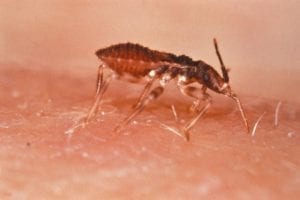For many people with Chagas disease, treatment may not be necessary; they stay asymptomatic and don’t experience many, if any, health effects. Some may experience mild flu-like symptoms. Typically, doctors recommend treatment if someone has symptoms during the acute phase, if an infant has a congenital infection, or if someone is immunocompromised. However, an estimated 20-40% of patients may have severe or life-threatening symptoms or organ damage.
While treatment options do exist, there has been little to no movement within this sphere over the past five decades. Current treatment options also come rife with side effects and require up to two months worth of treatment. Thus, developing new and effective therapeutic options is necessary.
According to a news article from UGA Today, researchers from the University of Georgia may have discovered a new potential treatment option for Chagas disease: an antiparasitic compound called AN15368. AN15368 works by targeting Trypanosoma cruzi (T. cruzi), the parasite which causes Chagas disease. So far, AN15368 has been evaluated in studies using mice and non-human primates who were naturally infected with T. cruzi. The therapy was 100% effective in treating and curing both groups. Additionally, it was found to be safe and well-tolerated. You can read more about this study in nature microbiology.
Moving forward, researchers hope to launch in-human studies of AN15368 over the coming years. Additionally, one researcher hopes that a partnership with veterinary pharmaceutical companies to address T. cruzi infections in pets could help spur funding, research, and medication availability in other countries.
What is Chagas Disease?
Chagas disease is a parasitic illness caused by T. cruzi that occurs in the Americas, with a specific stronghold in Latin America. An estimated 300,000 people in the United States, and 8 million people in Mexico, Central America, and SouthAmerica, have Chagas disease. The illness is spread through the triatomine bug (“the kissing bug”); the bug becomes infected as it feeds on infected humans and animals, and then spreads the parasites through infected feces. Other methods of transmission include from mother to baby, through organ transplants or blood transfusions, accidental lab exposure, and consumption of contaminated food or water.
Chagas disease comes in two phases. The first (acute) often lasts a few weeks to months following infection. At this point, many parasites can be found in the blood. While many people are asymptomatic, those with symptoms can (but do not always) experience:
- Fever
- Fatigue
- Nausea and vomiting
- Appetite loss
- Swelling or rash around the infection site
- Enlarged liver or spleen
- Swollen glands
- Head and body aches
- Diarrhea
- Romaña’s sign (swelling of the eyelids on the side of the face near the bite)
- Heart, brain, or brain lining inflammation (RARE)
The chronic phase often has no symptoms, though 20-30% of people may experience symptoms such as:
- An enlarged heart
- Heart rhythm abnormalities
- Cardiac arrest
- A dilated (enlarged) colon and/or esophagus
- Difficulty eating



-300x300.jpg)




